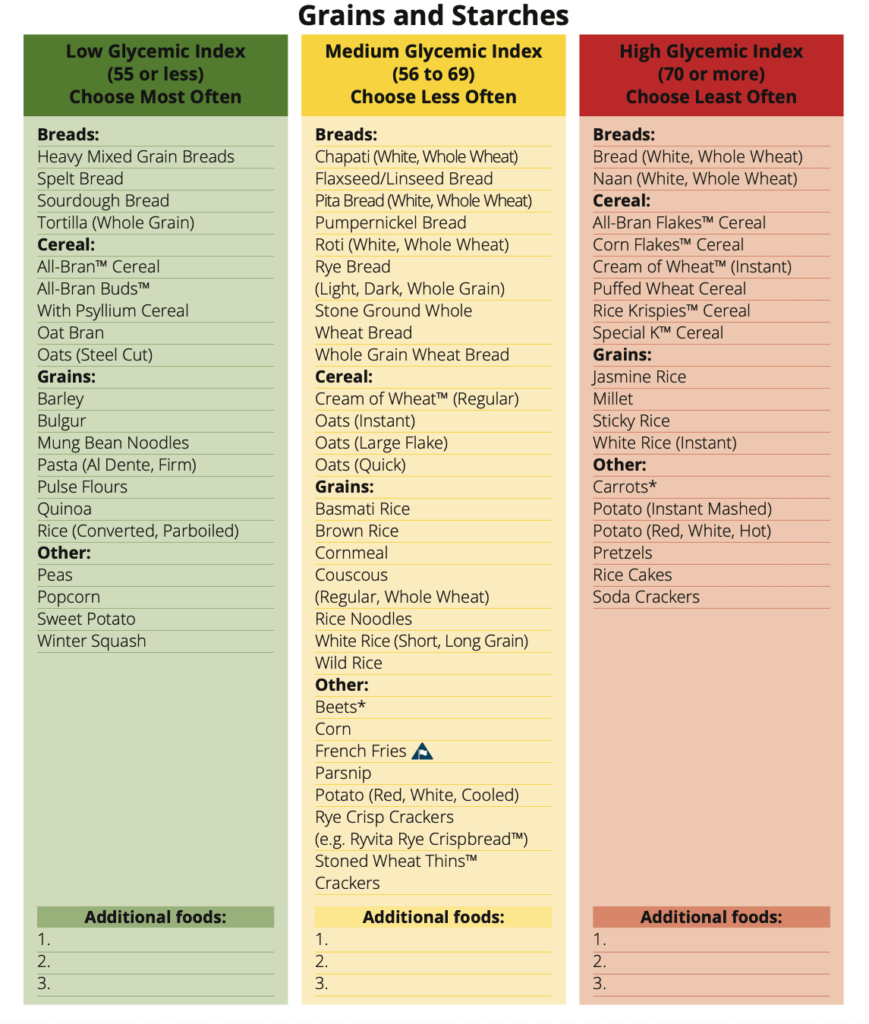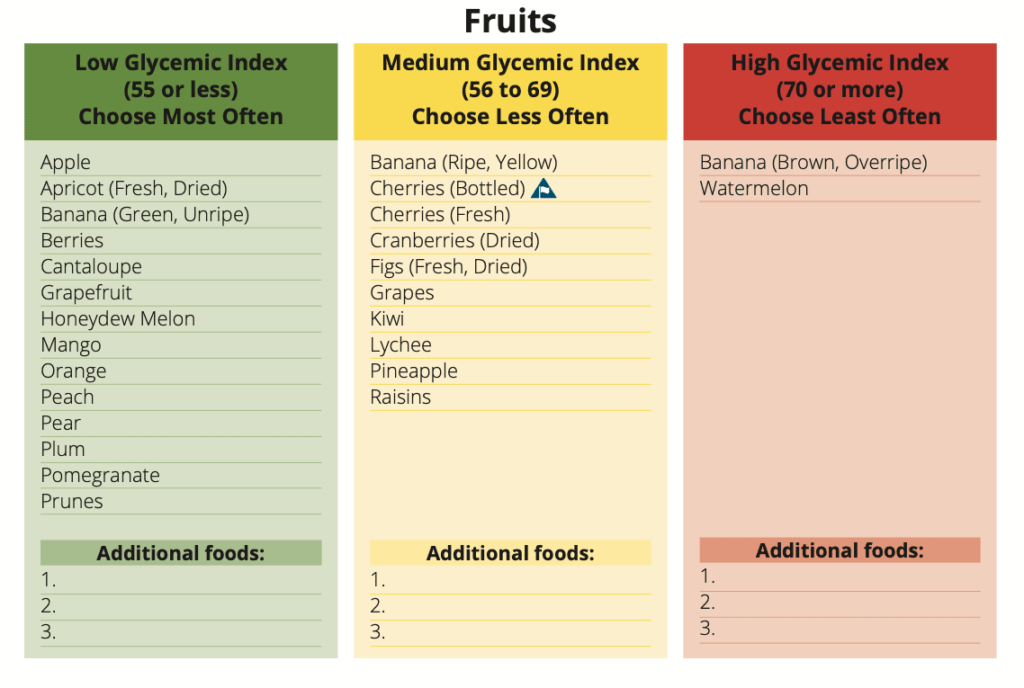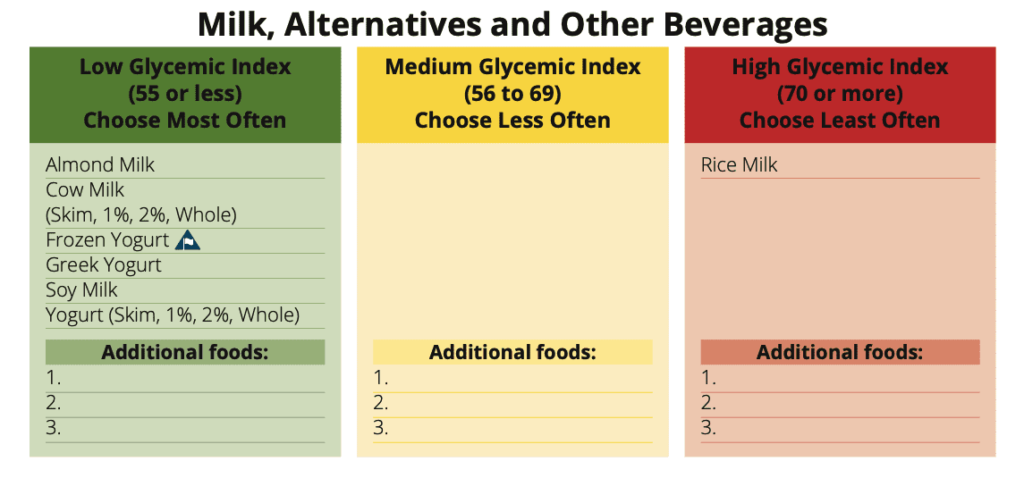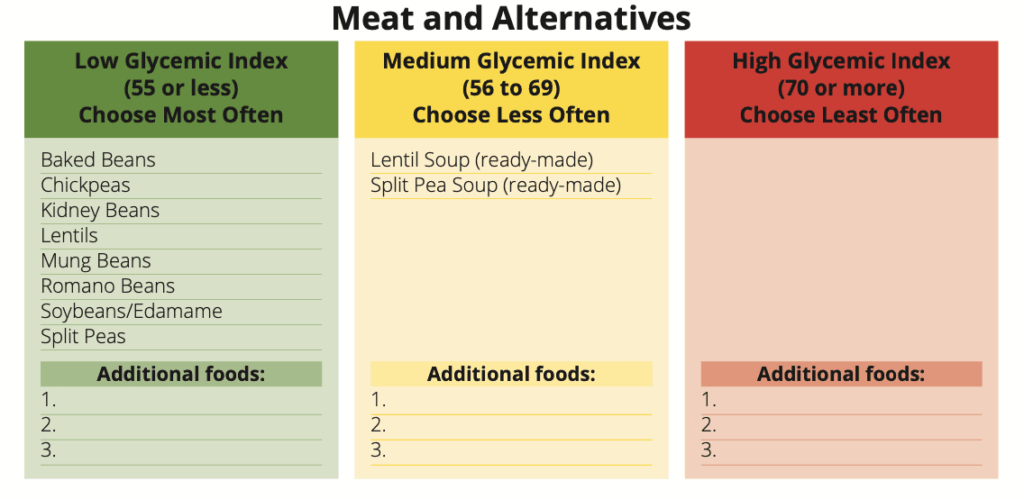You may have heard terms like “low glycemic index” and “high glycemic index”.
But what exactly do these words mean and how quickly do your blood sugar levels rise after eating high vs. low glycemic index (GI) foods?
In this article, I will define the GI for you and provide you with a glycemic index chart for common foods. I will also explain the relationship between blood sugar and GI and how to use the GI for weight loss.
What is Glycemic Index and Why Does It Matter?
The Glycemic Index (GI) is a value used to measure how each food containing carbohydrates affects your blood sugar (glucose) level.
There are several factors influencing the GI of a food item, including cooking method, nutrient composition, fibre, protein and fat content, processing, and even acidity.
Each food item is classified as low, medium, or high glycemic.
The International Organisation for Standardisation (ISO) measures foods’ GI on a scale from 1 to 100 and uses pure glucose as a reference (pure glucose has a GI of 100).
The higher the GI of a food item, the more it may raise your blood sugar levels.
This is because foods with a high GI metabolise into glucose more quickly as they are rapidly digested and absorbed by the body. As a result, they lead to marked fluctuations in blood sugar levels.
On the other hand, foods with a low GI take longer for the body to digest, meaning they produce smaller fluctuations in blood sugar levels.
That being said, let’s see why the GI matters and why foods with a low GI are essential to your health.
To start with, the GI is important because it helps you match the insulin action to the rate of digestion of a food item.
As you may already know, insulin is a hormone created by your pancreas that controls the amount of glucose in your blood.
After insulin shunts glucose into cells, your blood sugar level can drop, leaving you feeling low in energy or mood.
The GI helps you time insulin delivery to hold sugar levels as steady as possible after a meal and avoid blood glucose spikes (a sharp, quick rise in blood sugar levels).
This means that the GI is a valuable tool for blood sugar management.
Here’s how you can benefit from a low GI diet:
- According to the International Carbohydrate Quality Consortium (ICQC), a low GI diet can help you prevent and manage diabetes, cancer, coronary heart disease, Polycystic Ovarian Syndrome (PCOS), and even obesity.
- The American Diabetes Association explains how a low GI diet may help with gestational diabetes. This is a condition where a woman develops high blood sugar (glucose) during pregnancy.
- According to a 2016 study, a low GI diet reduces fatigue, inertia, and symptoms of depression. This means you can use a low GI diet to increase physical performance by extending endurance.
- Following a low GI diet helps you feel full longer and reduces body weight, as suggested by a study published in The American Journal of Clinical Nutrition.
- The science shows that a low GI diet also reduces acne and benefits eye health by preventing age-related macular degeneration, a leading cause of blindness (as highlighted by the Glycemic Index Foundation)
Glycemic Index for Common Foods
The Glycemic Index Foundation (GIF) classifies the GI of foods as low, medium, or high:
- Low GI = 55 or less
- Medium GI = 56 – 69
- High GI = 70 or greater
Here’s a simple reference guide of common foods classified as low, medium, and high GI. This Glycemic Index Food Guide is provided by Diabetes Canada – The nation’s most trusted provider of diabetes education, research, resources, and services.




How to Lower Your Diet’s Glycemic Index
Try these meal planning ideas to lower your diet’s GI:
- Eat whole oats and whole-grain breakfast cereals instead of quick oats and grits.
- Eat lightly sweetened yoghurt with ripe berries or cut fruit instead of sugar-sweetened pie, cake, or cookies.
- Cook your pasta “al dente” (about two minutes before the time expires on the package directions, give the pasta a bite. If it’s chewy but still contains a bit of a bite, then you’ve reached the “al dente” texture).
- Try lower GI grains, such as barley and bulgur instead of white, sticky rice.
- Consider eating more meat, poultry, and fish (unless you follow a diet that limits or excludes meat). Meat, poultry and fish do not have a GI because they do not contain carbohydrates.
- Replace white bread with whole-grain or whole-kernel bread.
- Choose sweet potatoes instead of white or red potatoes.
- To maintain the fibre content of vegetables, it’s best to lightly steam your vegetables or eat them raw.
- Reduce fruit juice to no more than one-half cup a day, and completely eliminate sugar-sweetened drinks.
- Choose foods with healthy fats, such as olive oil, nuts, and avocados. Limit saturated fats from animal products and completely eliminate trans fats, which are found in fast food and many packaged foods.
- If you’re really craving a piece of pie or cake, have protein with it, such as whey powder or cottage cheese. Protein will slow the release of sugars into your blood and help keep insulin levels steady. However, remember that adding protein to cakes or pies won’t help you avoid excess calories.
- Choose fruits that are not overly ripe. The riper the fruit, the higher the GI.
- Even if you love sushi, it’s best to choose sashimi to avoid the white rice which has a high glycemic index (not to mention that sushi rice is typically seasoned with a mixture of rice vinegar, sugar, and salt which are not the best option especially if you’re trying to lose weight).
Example of a Low Glycemic Index Meal Plan
Below you will find a few examples of meal options if you’re following a low GI meal plan:
Breakfast:
- Quinoa hazelnut porridge
- Scrambled eggs with smoked salmon
- Avocado and cottage cheese whip on toast
Lunch:
- Roast trout with quinoa
- Mexican beef mince and low GI rice
- Black bean soup
Dinner:
- Indian-style spiced vegetable and cheese parcels
- Chicken and pumpkin soup with quinoa
- Cauliflower and celeriac soup
Desserts:
- Oatmeal protein energy balls
- Strawberry yoghurt crunch
- Baked stuffed apples
For more low GI recipes, please visit the Glycemic Index Foundation website.
The bottom line
A low GI diet can help you balance your sugar levels so you can better manage your weight and health condition.
To do so, you need to limit the consumption of high GI food and make a meal plan based on healthy, low GI, unprocessed ingredients.
Making low GI choices is not difficult. As with many diets, moderation is key. All you need to do is strike a balance between eating low and high GI foods and have reasonable food portions without going overboard.
Sources:
Otsuka Pharmaceutical – The relationship between blood sugar level and GI
Healthline – Glycemic Index: What It Is and How to Use It
NHS – What is the glycaemic index (GI)?
Health Engine – Glycaemic Index (GI)
Medical News Today – What are high and low glycemic index foods?
Mayo Clinic – Glycemic index diet: What’s behind the claims
Harvard Health Publishing – Healthy diet: Is glycemic index the key?
National Library of Medicine – Timing of insulin delivery with meals
Diabetes Canada – Glycemic Index Food Guide
Harvard Health Publishing – 8 principles of low-glycemic eating
